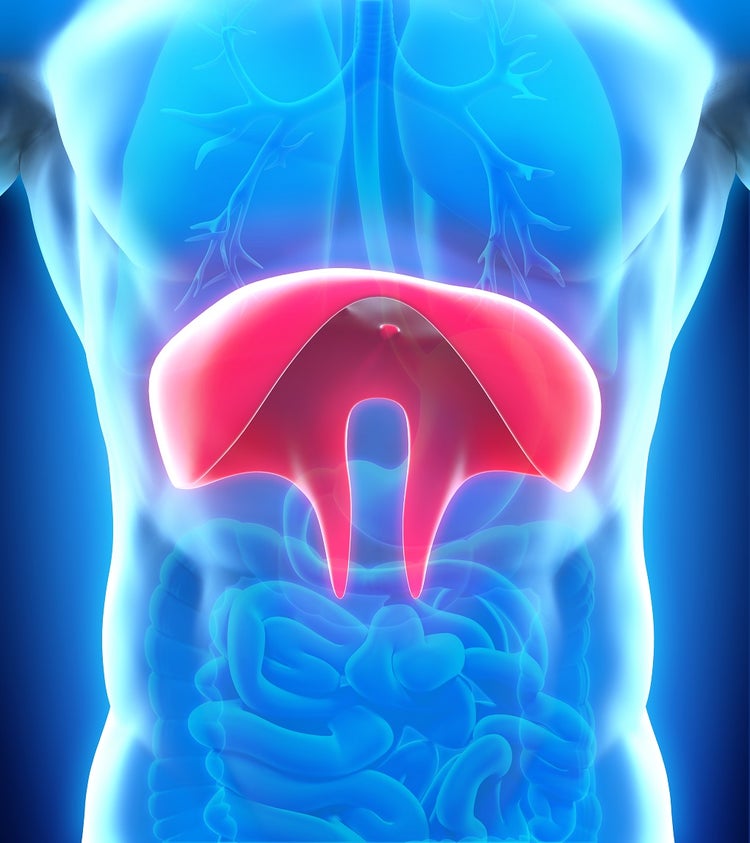How It Works: The Diaphragm

Breathing is one of our most basic functions. The nervous system, muscles, bones and connective tissue work together to control the air moving in and out of our bodies. Maybe because it is so basic and unconscious, we don’t often think about our breathing. But it affects everything from brain function to core stability to intestinal health.
The diaphragm, a flat-ish, elastic muscle that connects to the spine and across the bottom of the ribcage, plays a critical role. When functioning well, the diaphragm supports the core muscles and stabilizes the spine, improving posture.
Before we breathe in, the diaphragm is relaxed, and puffed up like a dome below our lungs. As we breathe in, it contracts down and out, opening the ribs, and expanding the lungs, and air flows in. During this downward contraction, the diaphragm also squishes our intestines a little, helping with the rhythmic contractions that keep things movin’ down there.
The middle of the diaphragm connects to the central tendon – a strong cord that extends upwards. It, in turn, connects to the pericardium – the sac that holds the heart. When the diaphragm contracts down during inhalation, it tugs on this tendon a little, pulling the pericardium into a tighter hug around the heart.
This physical link between breathing and the heart works with the nervous system to affect us in some profound ways, like increasing mindfulness, attention and focus. The nerves in our diaphragm also affect heart rate and blood pressure. Slow, rhythmical and relaxed exercise of the diaphragm has a tremendous benefit on the heart and blood pressure. It also reduces stress in the body by lowering cortisol levels (which are known to cause excess belly fat).
USE IT OR LOSE IT
Desk work and hunched postures restrict the movement of the diaphragm and ribs, and disrupt its ability to function. Luckily, as with other muscles, we can counteract some of this with deliberate exercise. Our best bet is to try different methods, and stay relaxed. It is important not to strain during breath work, as we might with other exercise.
TRY THIS
The diaphragm works to expand the ribs as you inhale, so as you practice, try expanding your ribs out as much as you can (without tensing up).
Lying on your back (knees bent), rest your hands on your stomach. Breathe in for 5 seconds, and push your hands up to the ceiling with your belly button. Exhale as slowly as you can (to a maximum of 10 seconds) letting your belly button fall back down.
AND THIS
Stand with your hands at your sides, palms facing forward. Look straight ahead with your shoulder blades down and toward each other. Staying relaxed, breath in and expand your ribs wide. Slow exhale and let the ribs fall back in naturally.
AND THIS, TOO
Lie on your stomach and rest your forehead on your hands. Inhale for 5 seconds, pushing your belly button into the ground. Slowly allow the belly button to return as you exhale for about 10 seconds.